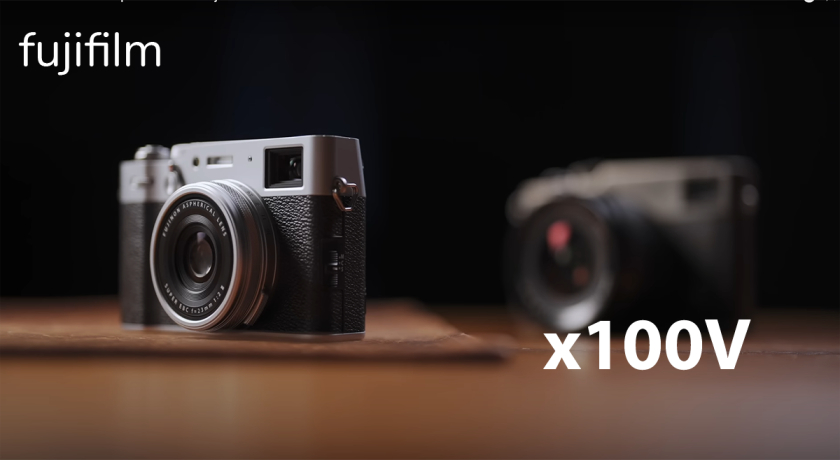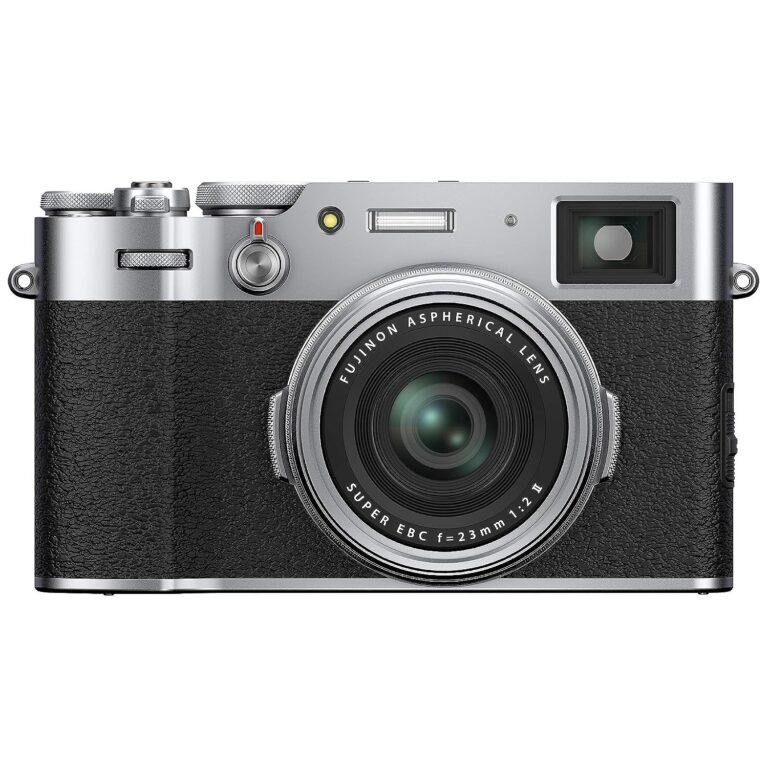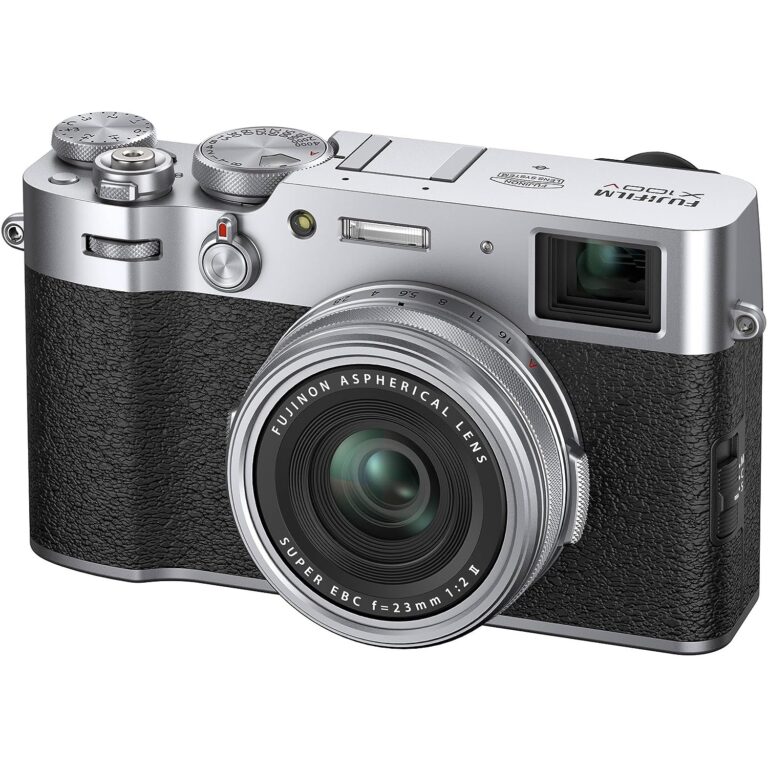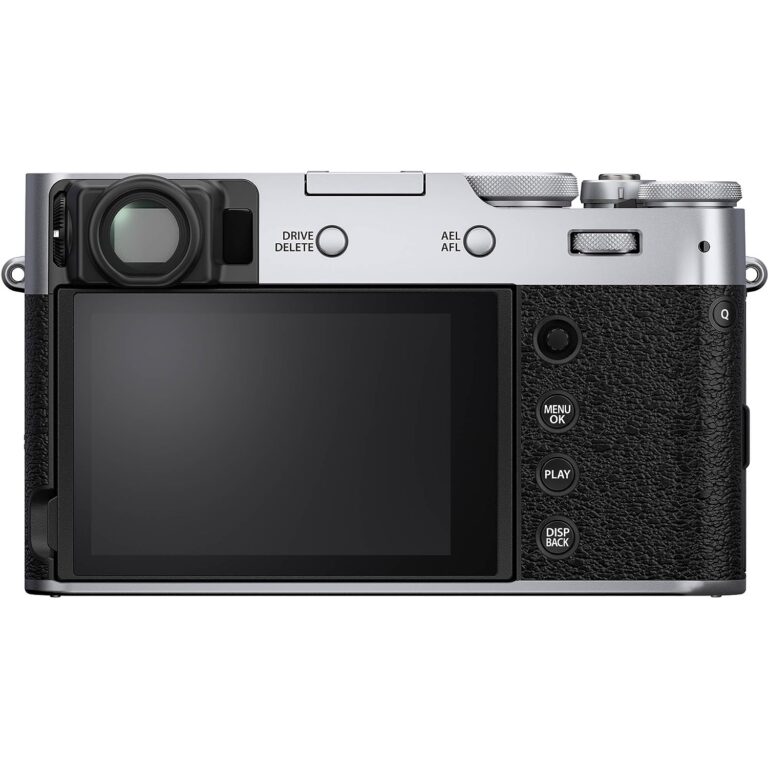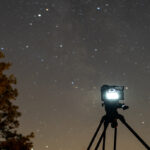Since the launch of the initial model a decade ago, Fujifilm has put out five cameras in the X100 series. The latest one to be released is the X100V. Fujifilm X100v has improved the features of its large-sensor, prime-lens compact camera with every new version.
Its latest model (pronounced Ex One Hundred Vee) combines. The vital elements of Fujifilm’s best substitutable-lens X-Pro3 into a lesser body.
This means that you are receiving the latest form of the 26MP X-Trans APS-C sensor and CPU from the dealer. also to the potential of significantly more actual centeredness and the most progressive video capabilities, we’ve seen on a compact camera with a prime lens.
But it continues from there; the ergonomics have gotten better, the viewfinder has been updated, and a lot more.
Our Review
A masterpiece, the Fujifilm X100V. It’s an everyday camera meant to bring back the pleasure of taking pictures, and it accomplishes it well. It doesn’t do anything wrong, which indicates why the price is so costly.
Aspect somewhere else if you are essential to a zoom lens, but then. His graceful, comfortable camera is the perfect traveling partner.
Pros
- reduced shooting method
- amazing picture quality
- Enhanced lens clarity
Cons
- Lowering video consumption
- pricing
The Fujifilm X100V Sensor
Both beginner and pro street photographers are able to utilize the Fuji X100V. Travel photographers are also going to find it appealing. Many cameras now attempt to bring back a sense of warmth and nostalgia comparable to the X100V. In simple terms, it motivates me to get out and shoot photos.
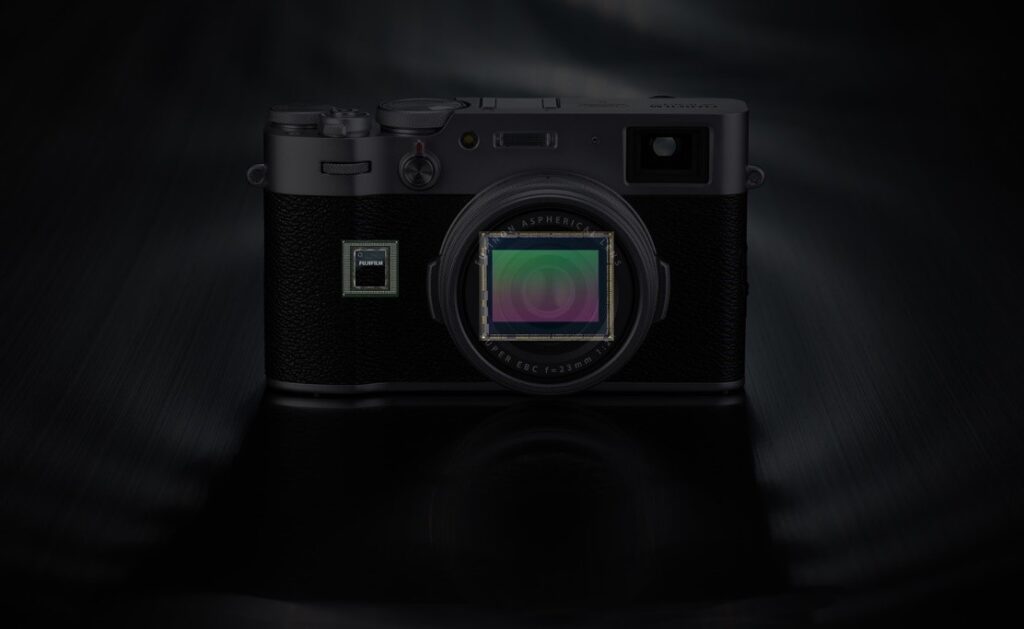
This camera will be useful to anyone capturing the environment, candid moments, and daily capture since it offers a 35mm equivalent field of view. It is also said that this length of focus is best for portrait photography.
It’s essential to note that the Fuji X100V isn’t the least inexpensive camera in its cost category. It acts as a second shooter for users at the enthusiast and expert levels. Alternatively, for those who opt for a prime lens over a zoom option.
Due to these limitations, it can also be an excellent match for film photographers. The X100V, with its manual controls, rangefinder style, and film simulations, is the digital alternative to their old rangefinder systems.
Quality of the Image Sensor of fujifilm x100v
The Fuji X100V utilizes a 26 MP APS-C sensor in its most current variant from Fujifilm. The final version certainly improves on the previous versions. It is the same technology as is used in Fujifilm’s flagship model, the X-Pro3.
Image quality is highly detailed because of the X-Trans CMOS 4 sensor and X-Processor 4. I mostly take street pictures with this camera. In addition, the resolution of the X100V remains unchanged despite the crop format.
The completely updated lens of the X100V may be to blame for this. Eight parts in six groups make up the 23mm f/2 pancake lens.
Shooting full-frame at f/2 with more crispy results than the previous variations is a major enhancement, along with the faster autofocus and mechanics.
All apertures show an improvement in corner and even center sharpness. It maintains a superb and constant quality throughout. Additionally, shooting in bright settings is made easier by the built-in 4-stop ND filter.
One of the main reasons I choose to utilize this model over its closest competitor, the X100F, is the image quality. In this respect, the Fujifilm X100V far surpasses the X100F, especially when contemplating infinity focus.
The Fuji X100V’s edge-to-edge clarity is unchanged compared to that of the Fuji X100F’s predecessor in street photography images. The created lens of the X100V offers greater sharpness.
The use of the APS-C format causes a slight chromatic aberration, but that is to be anticipated.
And the color fringing and vignetting are evident. Any of them would require a keen eye to identify. Additionally, it’s simple to change after the fact.
Some more advantages of Fujifilm x100v
All the advantages of Fuji’s ISO invariant sensor make sense when considering low-light performance. The photographs have extremely little noise, even at ISO settings as high as 3200 or 4000. Although the largest ISO of 12800 tests the capabilities of the sensor. Therefore, there will likely be a lot of noise.
a street photography snapshot with strong contrast, taken with the Fuji X100V.
The X100V has considerably better dynamic range performance. photograph by Dan Morris
Despite being an APS-C camera, the X100V has a remarkable dynamic range.
The RAW pictures produced by the X100V are outstanding in terms of editability and information preservation. Even when contrasted with full-frame competitors like the Sony RX1 and Leica Q2.
Fuji cameras are often lauded for generating JPEGs straight out of the camera. The X100V offers multiple antique film profiles along with the built-in color chrome effect. For people who like compressed formats, these are amusing additions. These are useful if editing isn’t something you’re fond of doing.
Burst and Focus
The hybrid autofocus system is an additional advance over previous models seen in the X100V. A color detection device and a 425-point phase-detection AF are combined.

The autofocus feature is very flexible, and the speed is great. But in dimmer settings, it may present a little trouble. Despite Fuji’s claim that this shooter has -5EV focusing abilities, it is not particularly effective in completely dark environments. In contrast to previous versions, this capacity has significantly improved. But you may have to transition to manual focus if you’re not filming in broad daylight.
Another outstanding feature is face tracking and AF AF. An image of a man shot with the Fuji X100V on the street.
When photographing natural street pictures, the Fuji X100V’s facial recognition autofocus, and 11 fps burst rate prove useful.
The Fujifilm X100V features a burst rate of 11 frames per minute with the mechanical shutter and 20 frames per minute when using the electronic shutter. While this is not all that I call for, it is a great match for urban and candid pictures.
The size of the buffer is even more amazing when using UHS-II cards. It is stated that the buffer can accommodate 17 RAW files. The good thing is that when the buffer is clearing, there’s no menu or camera lockup. This camera wasn’t created for sports photographers, but somebody can employ it.
I also frequently utilize the zone focusing and manual focus functions on this camera. Since I frequently take street photos, it’s quite helpful to me. Because it is a built-in function and the lens has no measurements, it lacks the authentic sense of analog photography. But it’s still a useful strategy.
The minimum focus distance of this lens is around 10–15 cm, which is an additional benefit. This is fantastic, especially when photographing street scenes with distorted portraits.
Content for videos
Video isn’t usually the first item people consider when considering the Fujifilm X100V. But it functions well for video.
for people who like to watch films, it offers 4K/30p, F-log performance, and multiple additional beneficial features. It is also 120 frames per minute at 1080p, which is ideal for recording slow motion. In addition, it can use the HDMI connection to record a 10-bit 4:2:2 color picture outdoors. This tool provides a lot of flexibility for color correction and post-production.
Individually, I wouldn’t buy this camera only to use it for video. There are problems like being unable to use the ND filter in video mode or the lack of stabilization. Sadly, when shooting videos, there is neither in-body stabilization (IBIS) nor lens stabilization. It, therefore, has limitations without a stabilization device or tripod.
Body Handling of fujifilm x100v

The X100V is customarily a variation of external variations from Fujifilm, some noticeable and some less so. All of these adjustments will have an influence on how your use the camera.
Key decisions
- The 4-way joystick has been essentially replaced with extra function buttons and touchscreen function swipes.
- When a filter and the AR-X100 lens filter adapter are fastened to the X100V, it can be considered to be weather-sealed.
- There are also multiple little design, material, and design modifications.
- Changing from Micro USB to USB-C.
Body Image Stabilization (IBIS) is absent.
Justin’s Decision: Not possessing in-body image stabilization is a huge concern if it comes to portability. When taking video with this camera, you will still need to bring a sturdy tripod or other stabilizing gear if you want to carry as little gear as possible.

The absence of IBIS significantly limits the camera’s movement, especially for videographers. They missed their opportunity by leaving off the ND filter and IBIS, which could have given this camera the dream of a single developer.
Fujifilm x100v price in India
The initial cost for the Mirrorless Camera (Body Only) in India is 83,989. As of July 24, 2023, Amazon India includes it at the cheapest price. Discover all of the information and features of the Fujifilm X100F Mirrorless Camera (Body Only).
Conclusion
The camera that I most eagerly expect to use is the Fuji X100V. It offers everything you might possibly need in a street and a travel camera. It is small, well-constructed, and has a lovely antique look. In addition, the image quality approaches that of some luxurious cameras.
It undoubtedly lasts because of its design and firmware improvements. This excellent small camera became my go-to camera during cocktail hours during wedding ceremonies, therefore, I highly suggest it.
ALSO READ: Canon PowerShot V10 Compact Camera expected launch with price

